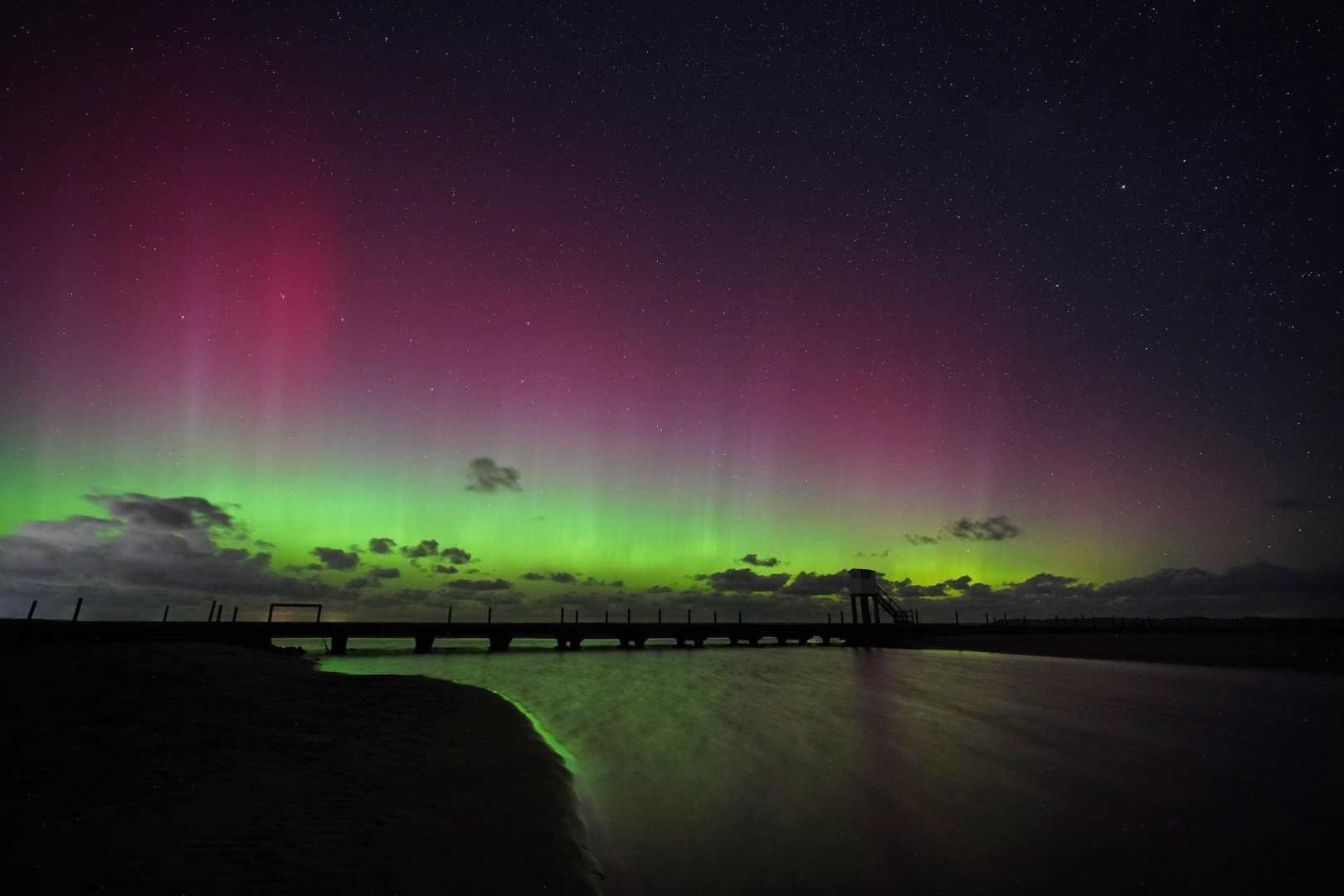News
Widespread Northern Lights Possible Across Northern U.S. Due to Geomagnetic Storm

The National Oceanic and Atmospheric Administration (NOAA) has issued a forecast projecting the possibility of a significant display of the northern lights across several states in the northern United States on Thursday night. This comes as a result of a potentially severe geomagnetic storm that could enhance the visibility of this spectacular natural event, known scientifically as the aurora borealis.
According to the NOAA, the aurora borealis is expected to be notably luminous and active, with the storm conditions potentially expanding the area where the northern lights can be observed. The agency anticipates that the aurora will be visible as far south as the southern edge of Nebraska, although individuals located further north are more likely to enjoy a better view.
“This geomagnetic storm is classified as having the potential to not only push the aurora viewing line further south but also impact radio communications and satellite navigation systems,” NOAA stated in a recent announcement.
Regions predicted to have a higher likelihood of seeing the aurora include Alaska and the northernmost parts of states such as Washington, Idaho, Montana, North Dakota, Minnesota, Michigan, and Wisconsin. Meanwhile, central and southern portions of these states, along with Wyoming, South Dakota, and northern Iowa, have a reduced chance. Moreover, this phenomenon might be visible in parts of Colorado, Connecticut, Illinois, Indiana, Iowa, Maine, Massachusetts, Missouri, Nebraska, New Hampshire, New Jersey, New York, Ohio, Oregon, Pennsylvania, Rhode Island, Vermont, and Washington.
NOAA suggests that the best time to witness the northern lights is between 10 p.m. and 2 a.m., provided conditions are clear with minimal light pollution. They recommend finding an elevated vantage point, such as a hill, to enhance the viewing experience. For those hoping to capture the event on camera, utilizing low shutter speeds and night mode is advised for smartphone photography.
This anticipated display follows a period of heightened solar activity, and for those unable to catch the aurora this week, NOAA forecasts suggest that such opportunities may increase as Solar Cycle 25 approaches its peak between late 2024 and early 2026.












